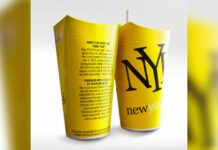For many foodservice operators the uniform says it all. Whether it’s back- or front-of-house, many factors impact uniform and shoe selection — from safety and comfort to personal style and branding.
For back-of-house operations, the major trend is a return to more traditional double-breasted chef jackets in white or black. According to Kim de la Villefromoy, VP of Business Development for New York-based Mercer Culinary, “The days of the fun prints for pants are over. Black pants are the big basic now, along with pinstripes.”
The key is to find clothes that are properly cut and made of material that washes well and can stand up to commercial laundering. So while organic and natural fabric may hold a place in some hearts, it really doesn’t have a place in the kitchen — unless you’re prepared to put up with shorter life expectancies for uniforms, he says. “To get clothes clean, you need to bleach them, which eats at fibres. The more organic the fibres, the easier they stain and get damaged. The predominant choice is a 65/35 polyester cotton blend because it washes best and provides the strength factor.”
When culinary students begin their program at the Canadian Food and Wine Institute at Niagara College in Ontario, uniforms are among the initial topics covered, says the school’s dean Craig Youdale. “The first training video goes over the elements of safe footwear, clean clothes, grooming and other standards expected across the industry.”
With regard to shoes, the main requirements are closed heels and toes and non-slip soles. Otherwise, the choice is often left to the student (or in the case of many restaurants, the employee), with costs running between $50 to $200. “Shoes are much more personal,” Youdale says. “Everyone has issues with feet, such as sizing, but the main thing is finding something you’re happy with and lets you work comfortably. Generally we don’t require CSA-approved or metal toe shoes, but some restaurant operations do.”
Laundry costs are embedded in the student’s overall material fees but according to Youdale, the cost of washing student uniforms is approximately $2.50 per jacket, per lab “plus costs for washing aprons, towels and linens.”
At Atlanta-based Popeyes Louisiana Kitchen, shoe choices are left up to the employees — within the guidelines provided. “We just require safe footwear that can be purchased at places like Payless, Walmart or Mark’s Work Wearhouse,” says Rob Manuel, regional leader of Canada.
Popeyes puts a great deal of time and effort into its uniform design. In fact, the chain changed its uniforms 18 months ago from a cotton polo shirt to a dry-fit fabric — a high-performance, microfibre, polyester fabric that moves sweat away from the body and to the fabric surface, where it evaporates.
A key issue for Popeyes, however, is the cost increases attributed to the drop in the Canadian dollar, since it imports its uniforms from a U.S. supplier. “The 30-per-cent devaluation has carried through to uniforms, which are the same as our U.S. restaurants,” Manuel says.
Certainly, there is a great deal that goes into overhauling a uniform design, especially when you have multiple brands to consider, says Paul Bognar, EVP and COO of SIR Corp. in Burlington, Ont. But it’s a necessary process in an industry where employees want to look and feel good on the job.
“We put a lot of time into our brand story, and a big part of that is the staff uniforms,” he says. “Guests want to see the staff’s personality when they come into one of our restaurants. We’re always trying to find a way to showcase individual personalities but at the same time, put rules in place for consistency.”
Each of its operations has its own story to tell. He describes Jack Astor’s as “cheekily playful,” with skorts for female staff members and black t-shirts with individualized slogans. Canyon Creek is slightly more formal, featuring white shirts, vests and black pants. For Scaddabush (the new brand replacing Alice Fazooli’s) it’s black t-shirts, grey vests and black pants; and at Reds, staff wear formal black blouses and long skirts. Even service managers have guidelines for blazers, pants and dress shirts.
Recently SIR Corp. decided to “reboot” its Jack Astor’s uniforms, switching to jeans and different coloured t-shirts. “It’s a little different style, but we’re giving it a shot at a few locations. So far the staff is really happy because it makes all different body types look good. You have to be conscious of that because you want people to feel good about coming to work.”
Bognar says maintaining inventory and working with suppliers for long-term supply is critical. “We probably keep $100,000 worth of skorts, pants and t-shirts for Jack Astor’s because it takes time to get orders in.”
While Unisync Group Ltd. is a premier supplier, Canadian retail chain Moores is SIR Corp’s supplier of choice for dress shirts and jackets because they’re reasonably priced and have representation across the country, Bognar explains. The company also works with retailers such as Abercrombie & Fitch and The Gap. “When sourcing from retailers, we have to ensure they can make an item available for six months across all locations.”
Styles are reviewed semi-annually by the marketing team. When a new uniform is slated for development, the company brings in a number of employees to assess outfits for style and comfort. “We pick a variety of body shapes to make sure they all look good and feel good. It’s important employees have a say in picking their uniforms.”
Bognar believes the right uniforms — coupled with employee input — is a big driver in staff retention and behaviour. “If they feel good about what they are wearing, it allows them to do what they do best. It lets their personality come out. A uniform goes a long way towards employee engagement.”
Written By: Denise Deveau
Volume 49, Number 1

















